Knowing how to change a tire is a necessary skill for all drivers. If you rely on a cell phone to save you in a roadside emergency, there’s always that chance you will forget to charge it, be out of range, or leave it at home. Flat tires can happen anywhere, and a cell phone is no substitute for knowing how to change a flat tire.
Thankfully, changing a tire isn’t all that hard! Just adhere to the following guidelines to be prepared in case you have a flat.
These items should have come with your vehicle:
Jack
Lug wrench
Fully inflated spare tire
Vehicle owner’s manual
If you have misplaced any of these items, or if your car did not come with these items, you should purchase new ones right away. And be sure you’re regularly inflating the spare tire to your vehicle manufacturer’s recommended PSI. You should check the spare’s air pressure every time you check your other tires.
Remember to check pressure every month and before long trips or carrying extra load.
Here are some items that don’t come with your vehicle but that you should stow in your trunk or glove box in case you have to change a flat tire:
Flashlight with working batteries
Rain poncho
Small cut of 2"x6” wood to secure the jack
Gloves
Wheel wedges
As soon as you realize you have a flat tire, do not abruptly brake or turn. Slowly reduce speed and scan your surroundings for a level, straight stretch of road with a wide shoulder. An empty parking lot would be an ideal place. Level ground is good because it will prevent your vehicle from rolling. Also, straight stretches of road are better than curves because oncoming traffic is more likely to see you.
Never attempt to change your tire on a narrow shoulder near oncoming traffic. Keep moving (slowly) until you find a safer spot. While driving on a flat risks ruining your rim, replacing a rim is better than being hit by an inattentive driver.
Make sure to consult your owner’s manual and review their specific steps on how to change a flat tire for your vehicle
Your hazard lights or “flashers” will help other drivers see you on the side of the road. To avoid an accident, turn them on as soon as you realize you need to pull over.
Once stopped, always use the parking brake when preparing to replace a flat tire. This will minimize the possibility of your vehicle rolling.
Wheel wedges go in front of or behind the tires to further ensure the vehicle doesn’t roll while you fix the flat tire. If you’re changing a rear tire, place these in front of the front tires. If your flat tire is at the front, put the wheel wedges behind the rear tires.
Bricks or large stones will work just as well as “real” wheel wedges. Just be sure they’re large enough to stop the car from rolling.
If your vehicle has a hubcap covering the lug nuts, it’s easier to remove the hubcap before lifting the vehicle with the jack.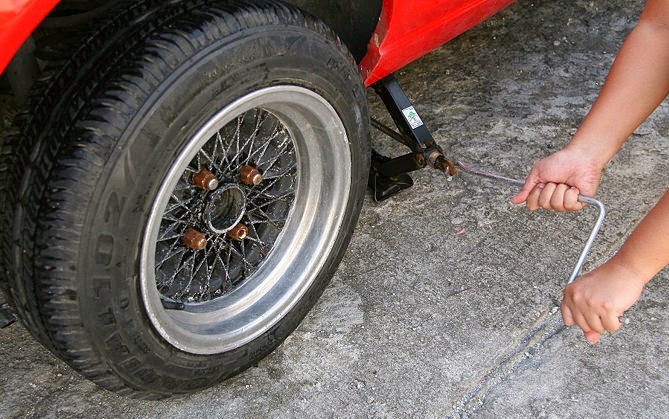 If your lug nuts are exposed, you can skip ahead to Step 6.
If your lug nuts are exposed, you can skip ahead to Step 6.
Use the flat end of your lug wrench to remove the hubcap. This will work for most vehicles, but some hubcaps need a different tool to come off. Consult your owner’s manual for proper hubcap or wheel cover removal procedures.
Using the lug wrench, turn the lug nuts counterclockwise until you break their resistance. You may have to use force, and that’s ok. Use your foot or all of your body weight if necessary.
Loosen the lug nuts about ¼ to ½ of a turn, but don’t remove them completely yet. Save that for when it’s time to remove your tire/wheel from the vehicle.
The right place for the jack is usually beneath the vehicle frame alongside the tire that’s flat. Many vehicle frames have molded plastic on the bottom with a cleared area of exposed metal specifically for the jack. To safely lift and avoid damage to the vehicle, follow the instructions for jack placement in your vehicle owner’s manual.
To prevent the jack from settling under the weight of your vehicle and coming off balance, place a small cut of 2x6” wood beneath it before attempting to raise your vehicle. This tactic is especially helpful on asphalt.
With the jack properly positioned, raise the vehicle until the flat tire is about six inches above the ground.
Never put any part of your body under the vehicle during or after raising the vehicle with the jack.
Now it’s time to remove the lug nuts all the way. Since you've already loosened them, you should be able to unscrew them mostly by hand.
Gripping the tire by the treads, pull it gently toward you until it’s completely free from the hub behind it. Set it on its side so that it doesn’t roll away.
Now place the spare on the hub by lining up the rim with the lug bolts. Push gently until the lug bolts show through the rim.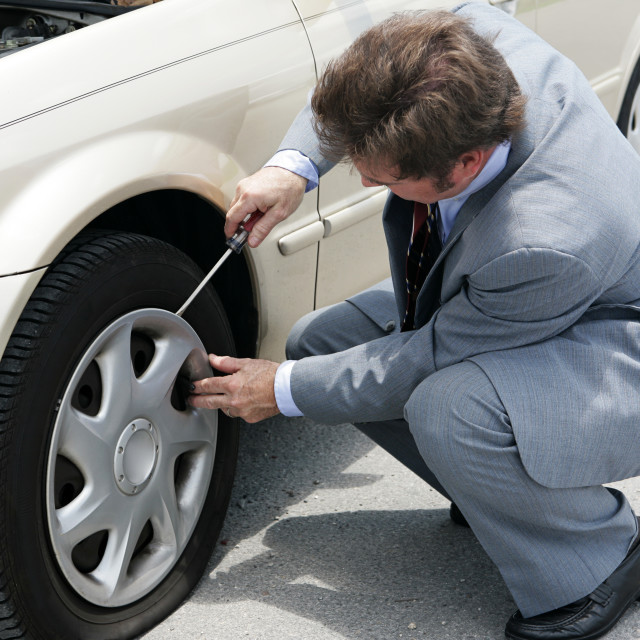
Put the lug nuts back on the lug bolts and tighten them all the way by hand. Once they are all on, check each one again, tightening as much as possible. You will tighten them with the wrench after lowering the vehicle to the ground.
Use the jack to lower the vehicle so that the spare tire is resting on the ground but the full weight of the vehicle isn’t fully on the tire. At this point, you should tighten the lug nuts with the wrench, turning clockwise, as much as you can. Push down on the lug wrench with the full weight of your body.
Bring the vehicle all the way to the ground and remove the jack. Give the lug nuts another pull with the wrench to ensure they’re as tight as possible.
If the hubcap you took from the flat tire will fit your spare, put it in place the same way you removed it initially. If it doesn’t fit, stow it away with the tire when you stow your equipment.
If it doesn’t fit, stow it away with the tire when you stow your equipment.
You have before you a jack, a lug wrench, wheel wedges, your flat tire, and possibly a hubcap. Don’t forget to put all of them in your vehicle before driving away.
You should check the tire pressure of the spare tire to make sure that it is safe to drive on. “T-Type” temporary spares, also called “mini-spares,” require 60 psi (420 kPa). If the tire needs pressure, drive (slowly) to a service station immediately.
Temporary spare tires aren’t made to drive long distances or at high speeds, so drive cautiously until you’re able to visit a tire technician. A professional should be able to determine whether your tire needs a repair or if it’s time to replace it.
Aside from taking your tire to a professional, the above procedure shouldn’t take more than 15 to 30 minutes to change a tire. Just be sure you don’t leave out any steps.
Just be sure you don’t leave out any steps.
It’s beneficial practice changing a tire in your garage or driveway to ensure you’re ready to handle this situation if it ever happens to you.
Knowing how to fix a flat tire is great, but regular tire maintenance is even more important. In addition to reviewing this guide regularly, remember to do the following:
Keep your tires properly inflated
Rotate your tires according to the manufacturer’s guidelines
Monitor for tread wear
All of these precautions will extend the life of your tires and reduce the likelihood of a flat. While there’s no way to prevent flat tires completely, proper care can improve performance and ensure your tires last as long as possible.
There’s never a good time for a flat. That’s why Bridgestone DriveGuard tires are masterfully engineered to keep you moving for up to 50 miles at speeds up to 50 MPH without disruption.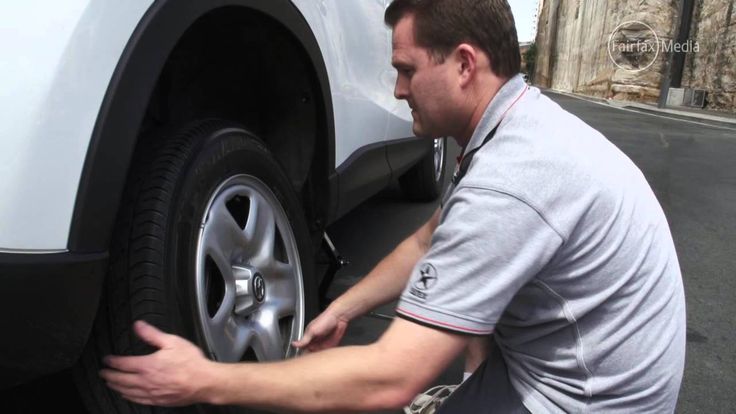
There’s never a good time for a flat. That’s why Bridgestone DriveGuard tires are masterfully engineered to keep you moving for up to 50 miles at speeds up to 50 MPH without disruption.
See Details Find Your Fit
Have you got a tire puncture in the middle of your journey? Perhaps you’ve noticed signs of a low tire tread, and you’re afraid that it’ll put you at risk while on the road. Or maybe you haven’t changed your tires for a long time and figure it’s time to replace them.
Whatever the case, the first thing that pops into your head is, “How can I change a tire, and how long does it take to change a tire?”
The time it takes to change a tire will depend on the situation:

Generally speaking, you can replace a tire in 15 minutes. But it may vary depending on the situation, vehicle model and the person who’s trying to do the job.
We’ll tell you how long it’ll take to change a tire by yourself, in the tire center and with the help of roadside assistance.
As the term ‘professional’ indicates, these people are experts in this field. So, they’re many times faster than a regular car owner when it comes to changing a tire.
Unfortunately, it won’t take 20 seconds like you see on Nascar. For a mechanic, it would take around 10 minutes to change a regular tire. This means they can have all four wheels ready to go in 40 minutes.
However, some factors can cause delays in the process and increase the time up to four hours.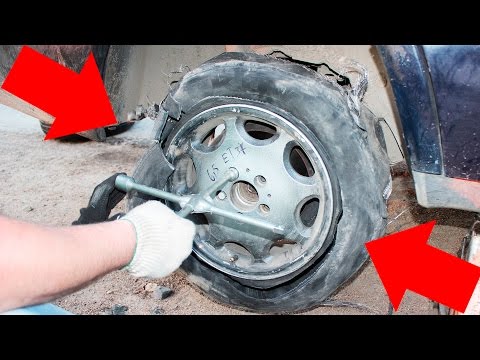 For example, your car may be far from the tire shop, the provider may be busy with other customers, or it may fail to offer fast customer service.
For example, your car may be far from the tire shop, the provider may be busy with other customers, or it may fail to offer fast customer service.
Here are the most popular tire centers in America. You can schedule a time with any of them according to your preferences.
Walmart stores have about 265 million customer visits per week. So, obviously, you won’t be the only customer there.
Depending on how many cars are waiting in front of you, you might spend between one to four hours in a Walmart auto care center. So, although the long lines indicate its outstanding services, you ought not to consider Walmart if you’re a busy bee.
It will take at least 45 minutes and at most two hours to replace all four tires at Costco. Compared to other large tire services, the average time for a tire change is less with this provider. But it has some limitations as well.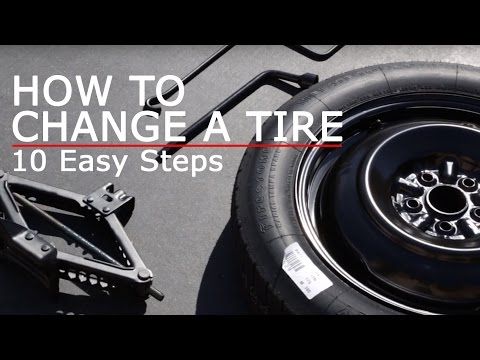
For example, the staff won’t install your tire unless you buy it from Costco. Plus, the tire installation fee at Costco is higher than that of Walmart.
With a time guarantee, Firestone promises to prepare your car right at the appointed time. If the staff fail to make it ready at the specified time, it will take 10 percent off your next visit.
Despite that, customer feedback indicates waiting time is still long in these auto shops. Some customers have to wait up to five hours—but if you’re lucky enough to be the first customer or you’ve made an appointment, you’ll make it through in just 45 minutes.
According to the J.D. Power and Associates Emergency Roadside Assistance Study, drivers wait an average of 50 minutes until help arrives. However, depending on the roadside assistance program you use and the system you’re calling from, the duration may vary slightly.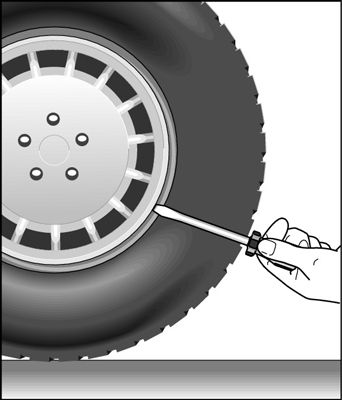
Aside from the waiting time, roadside assistance requires around 10 minutes per wheel to change your car tires.
Also, since they’re emergency programs, you usually don’t ask for a four-tire replacement. So the whole process takes less than an hour.
Although easier, it’s not always possible to visit a tire service or call a professional. Imagine you get caught with a flat tire in the middle of the road. Your phone battery is dead and you don’t have a telematics system in your car.
This scenario is a nightmare for those who don’t know how to replace a tire. So you’d better learn how to change the tires rather than relying on professionals. This way, you’ll not only save money but also survive in challenging situations.
If you’re a bit of a handyman and have all the necessary tools, it would take about 15 to 20 minutes to change your car tire. However, if it’s your first effort, you may need 30 minutes or more to replace each tire.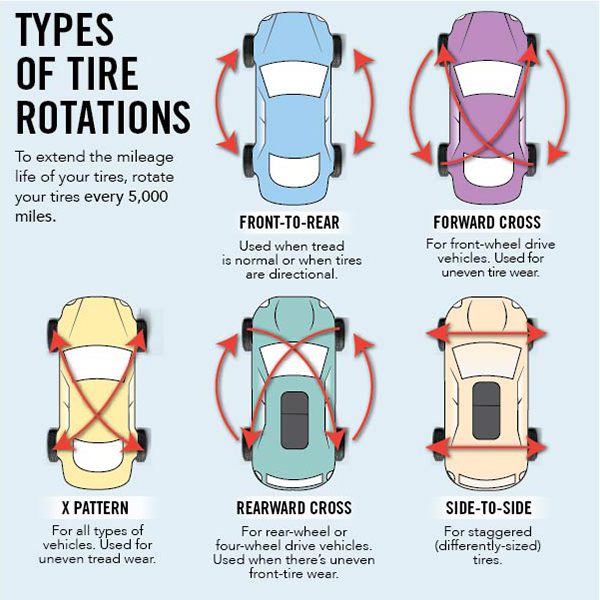
Here’s how to change your tire by hand. But before going through the steps, you should know what equipment you need for a tire replacement. Get the tools ready and put them in your car trunk for an emergency.
Necessary tools:
Assistive tools:
First, you should park your vehicle on solid level ground so that it won’t roll. Then, you should make sure you’re not in the way of other cars.
A home garage or empty parking lot is the best place to change a tire. But if you’re facing an emergency on the road, slow down the car and park in the nearest location. For more safety, turn on your emergency flashers, use the emergency triangle to warn other drivers and don’t park in a road bend.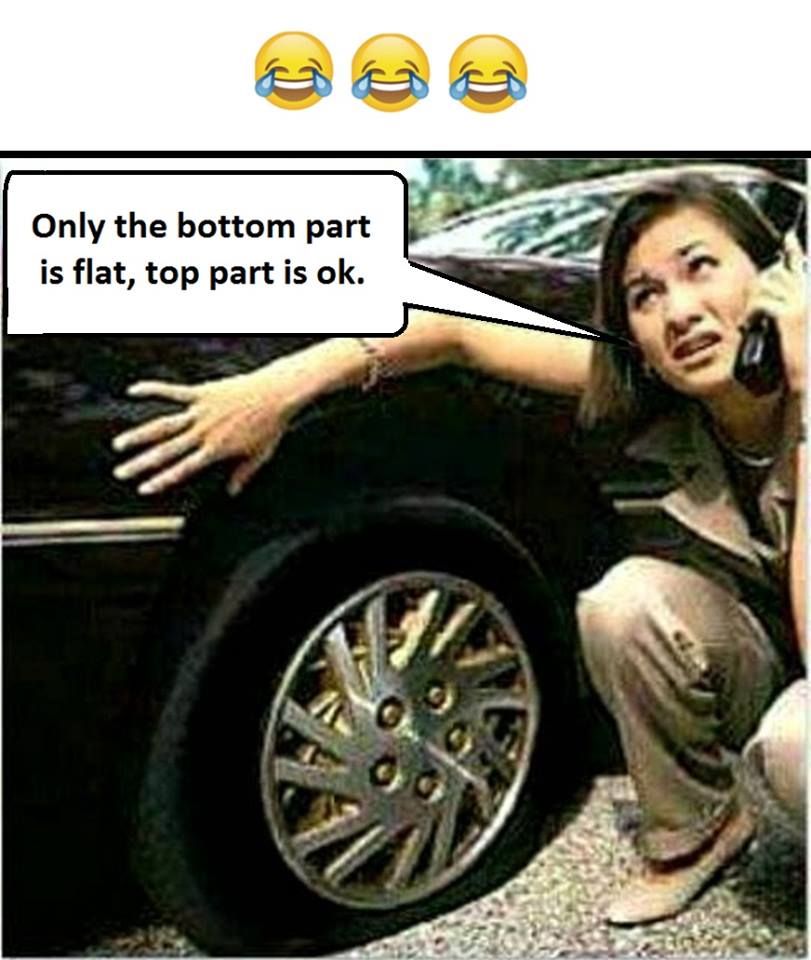
Shift the gear to the neutral position and pull up the hand brake. Then, place the wedges against the tires (except for the one you’re going to replace) to further control the car. If you don’t have wedges, some wooden blocks or heavy stones will do the trick.
Use your lug wrench and twist it to the left to screw off the lug nuts, but don’t remove them completely.
Once the lug nuts are loose, put the jack under the vehicle in a vertical position along with the frame. Then lift it until the tire is around 6 inches above the ground, and pull the lug nuts off. Don’t forget to put them in your pocket or somewhere safe so that they won’t roll away.
Grip the tire treads, remove the tire and set it somewhere away from the road.
Install the tire on your car, and screw the bolts back by hand.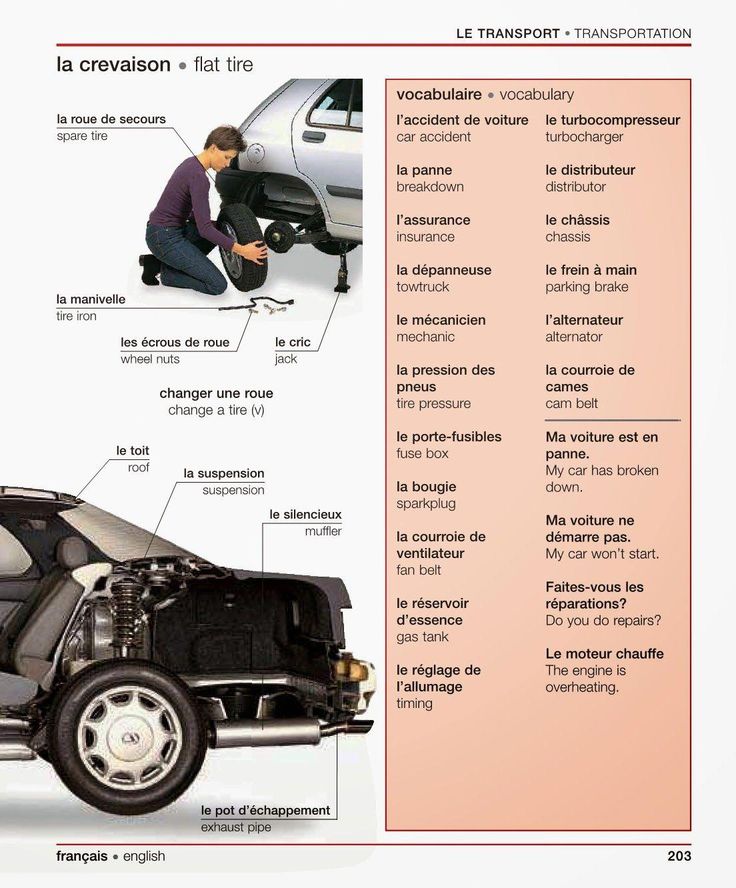 Lower the car down without forcing its full weight on the tire. Then, use the wrench to tighten the lug nuts and remove the carjack.
Lower the car down without forcing its full weight on the tire. Then, use the wrench to tighten the lug nuts and remove the carjack.
Now that you know how much it would take to change a tire, you might wonder when it is right to change it.
Tires wear down over time. This means that even if you check the air pressure, regularly align your wheels and take care of tire service and tire maintenance regularly, tread wear over time is inevitable.
Be it because of the weather, road conditions, your driving style or the tread wear rating, every tire works for a limited time and sooner or later, you’ll have to replace it.
The maximum lifespan of most tires is 10 years. However, some factors can shorten their life.
For example, if you’re a fast driver, you’ll probably need to change it sooner. Moreover, if you live in, or regularly travel to, very hot, cold or dry weather, the chance of getting a flat or wear and tears increases.
Here are a few other factors that will make you go for a tire change sooner than 10 years:

To know the right time to change your tire, you should do a thorough examination each year. If you observe any of the following issues, it’s time for a tires change:
You can drive on a tire for at least five years and, at most, 10 years. After this long period, you should immediately change your tires, even if they seem to be usable.
After this long period, you should immediately change your tires, even if they seem to be usable.
Another factor to consider is the mileage you’ve driven with those tires. Although it may vary according to the tire handbook, most tires need replacement after running 25,000 to 40,000 miles.
Ideally, all four tires should be replaced at the same time, unless there’s a puncture in one of the tires. In other words, if the tires have worn as a result of ordinary use, you should replace all of them at once. But if you run into a flat tire situation, there’s no need to replace other tires.
However, make sure you’re using the same model and brand. Having a variety of tire types or brands on your vehicle can lead to instability.
You won’t need an alignment after replacing one tire because it has nothing to do with tire replacement. However, if the provider checks the car on the balancing machine for free, it’s sensible to do so.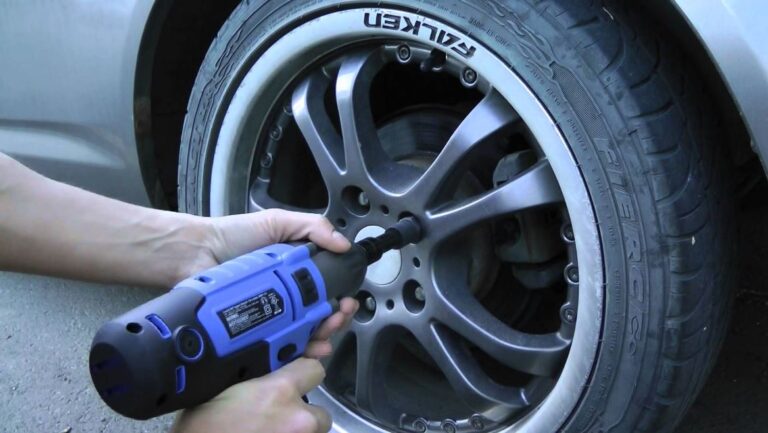 Aligned tires will ensure you’ll have a smooth ride. It adjusts the angle between your tires and the road and increases the longevity of your tires.
Aligned tires will ensure you’ll have a smooth ride. It adjusts the angle between your tires and the road and increases the longevity of your tires.
Except for a few manufacturers that approve using mixed tires for the car, it’s not ideal or safe to have different tires front and back. All four tires should match in their sizes, tread patterns, models and even brand. This way, you won’t bother to replace each tire at a different time. It also ensures your safety and control.
You can drive several miles on a flat tire before the wheel edges get damaged. However, you should go slowly and make sure the tire is not entirely free of air. If the tire shop is not close enough, try to find a safe parking lot and change it yourself.
If you have a pump in your trunk, you can also stop the vehicle after a couple of minutes and inflate the wheels. This may allow you to drive a little further.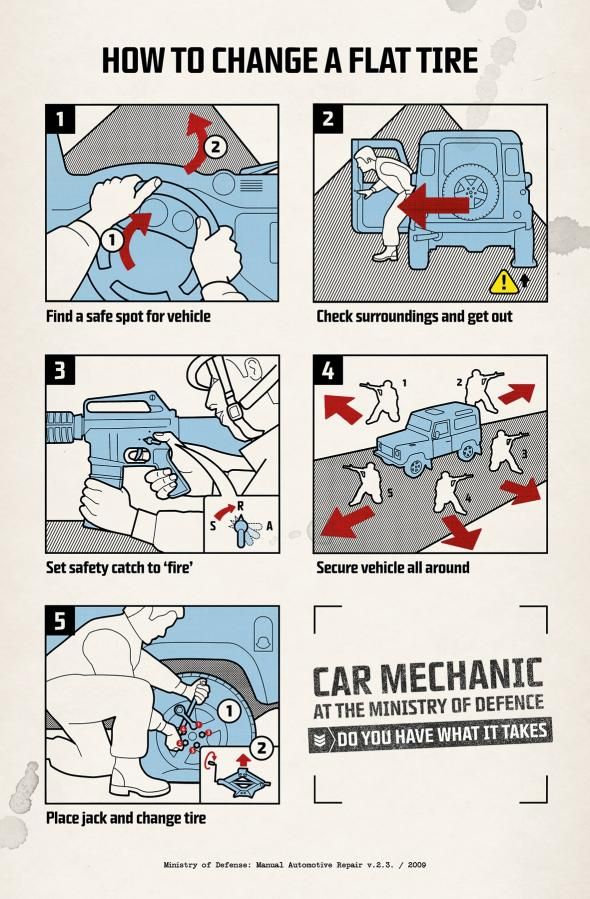
With the right tools and enough skills, changing a flat tire would take no more than half an hour. But at best, you can do the procedure in only 15 minutes.
Yes, it’s safe to change your own tires. Although the process may be physically demanding, the steps are straightforward, and with a little practice in your garage, you’ll be adept at replacing your tires.
You can change a tire without a jack if you have something like a shovel or gardening tool to dig the soil under your car. You can even use your hands, lug wrench or tire iron to do so.
Here’s what to do if you have a flat tire with no spare tire, but remember that you should consider these before running to a flat.

A tire on car can sometimes pop from heat. High temperatures build more friction between the ground and the tire, overheating them quickly and leading to tire blowouts.
Tires can’t cause death wobbles—even if the wheels are out of alignment or imbalanced. However, they can prompt or intensify such problems.
The time that would take you to change a tire depends on your expertise, available tools and the place in which you’re parking. But as a rule of thumb, non-professionals need 15 to 20 minutes to replace one tire.
On the other hand, in a tire repair shop, the time depends on the workload of their staff. On average, it will take them about 2.5 hours to get the job done, although they can replace each tire in less than 10 minutes.
Sooner or later all tires wear out or get damaged and need to be replaced.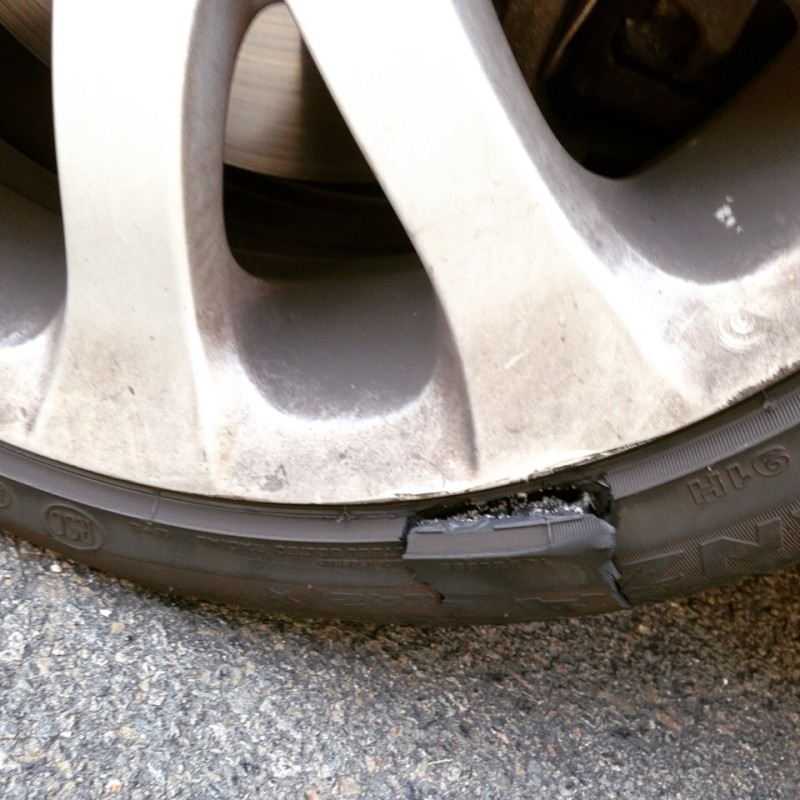
How quickly this happens depends on various factors, including how you drive, the natural environment where you live, and how well your tires are cared for.
Tires should be checked regularly (at least once a month). The following are signs that indicate the need for tire replacement.
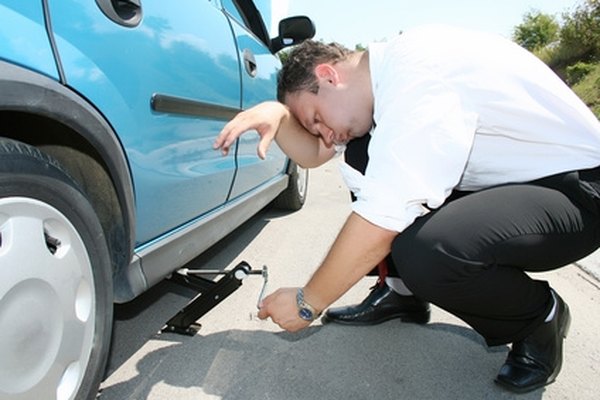 6 mm, the tire cannot be repaired.
6 mm, the tire cannot be repaired.
This is the best replacement. Excellent handling requires all four tires to be of the same type and size, unless otherwise recommended by the vehicle manufacturer.
When purchasing only two new replacement tires, make sure they are compatible with other tires in use, comply with current legislation and the requirements of the vehicle manufacturer.
Buying only two new tires, put them on the rear wheels for better grip and stability while driving.
If tires are to be used simultaneously, fit radial tires on the rear wheels.
Radial and non-radial tires on the same axle at the same time.
It is not recommended to use tires with different speed ratings on the same vehicle.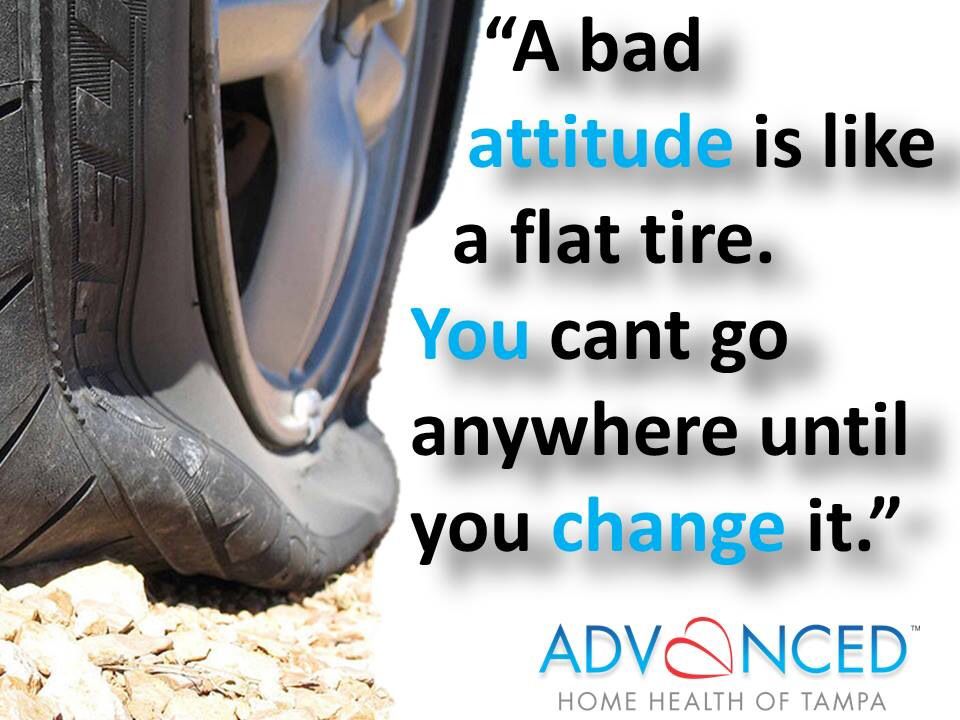 If, nevertheless, the speed index of the tires is different, a pair of tires with the same indexes should be put on the same axle.
If, nevertheless, the speed index of the tires is different, a pair of tires with the same indexes should be put on the same axle.
New tires must have at least the original manufacturer's recommended load capacity.
90% of end-of-life used tires are recycled as fuel (in the US, Japan and Europe).
Before changing tires, read your vehicle owner's manual and follow the tire manufacturer's recommendations for changing tires. Changing the type or size of tires can greatly affect the handling of the vehicle.
Author: Aleksey Kokorin
Experienced drivers are not surprised by such a trifle as a puncture, but beginners for the first time usually get confused in the sequence of actions, forget about important details and do not know what to do with a punctured wheel even in a tire shop - especially if they start offering choose from several options or intimidate with expensive repairs. Let's set up an operation algorithm when a flat tire is detected and figure out what to do right away and what to choose later.
Let's set up an operation algorithm when a flat tire is detected and figure out what to do right away and what to choose later.
What to do when you find a puncture
Having found a flat tire, first of all you need to stop in a safe place, turn on the alarm, assess visibility and, if necessary, set an emergency stop sign: according to traffic rules, it is installed at least 15 meters from the car in the village and at least 30 meters outside the settlement. When choosing where to stop, consider the space to the side of the vehicle to handle a flat tire. You should not stop right on the road and in places where stopping and parking are prohibited: even if a punctured wheel belongs to the conditions of a forced stop, it is quite possible to drive several tens of meters on it to choose a safe and convenient parking place. At night or in conditions of limited visibility (for example, in fog or rain), it is imperative to wear a vest with retroreflective elements - this is required by clause 2.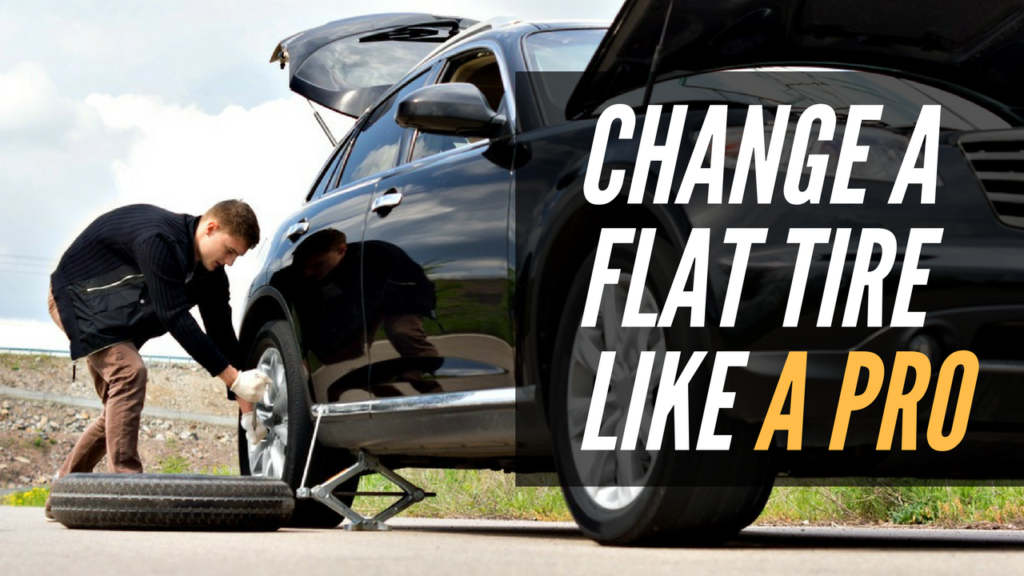 3.4 of the SDA and common sense.
3.4 of the SDA and common sense.
Now you can start working on the wheel. We will sequentially consider several options for action, and then move on to ways to repair a damaged tire.
The most obvious solution to a flat tire is to replace it. If you have a spare tire that you are sure is in good condition, the best option is to install it and visit a tire shop to repair a punctured tire - such repairs will be more reliable and of high quality than doing it yourself.
If you do not have a suitable spare tire, but you do have a pump or compressor, you can assess the damage to the tire and try to pump it up again to get to the tire shop. It is better to start searching for an air leak with a valve (aka “nipple” or “nipple”): often a faulty spool becomes the cause of a flat tire. It is easy to check it: unscrew the protective cap (if there is one), pour water on it (or slobber it, as in childhood): air bubbles will leak. In this case, you can try to replace the spool valve by unscrewing it and screwing in a new one, but if there is no new valve, as well as a store nearby, you can try just unscrewing and screwing it back in. Regardless of whether it helped or not, you need to visit a tire shop to replace the entire spool or valve.
Regardless of whether it helped or not, you need to visit a tire shop to replace the entire spool or valve.
If the valve is tight and the tire is flat, it is most likely a puncture. The easiest way to find a puncture that is free of foreign objects is to pour water on the tire while looking at the surface: the damage will reveal itself as air bubbles. However, often the cause of the puncture can be found along with it: a self-tapping screw, nail or other arbitrary object sticking out of the wheel will clearly indicate the place of depressurization. In this case, you do not need to immediately remove the foreign object from the tire: it partially seals the hole, and if the pressure loss is slow, you can try to pump up the wheel and drive to the tire shop.
The same goes for wheels that are leaking from the rim or from a faulty valve. Usually, in this case, the air is bled slowly, and you can pump up the wheel and have time to get to the place of repair. By the way, rim leakage can occur due to disk deformation upon impact - for example, when hitting a pit with sharp edges.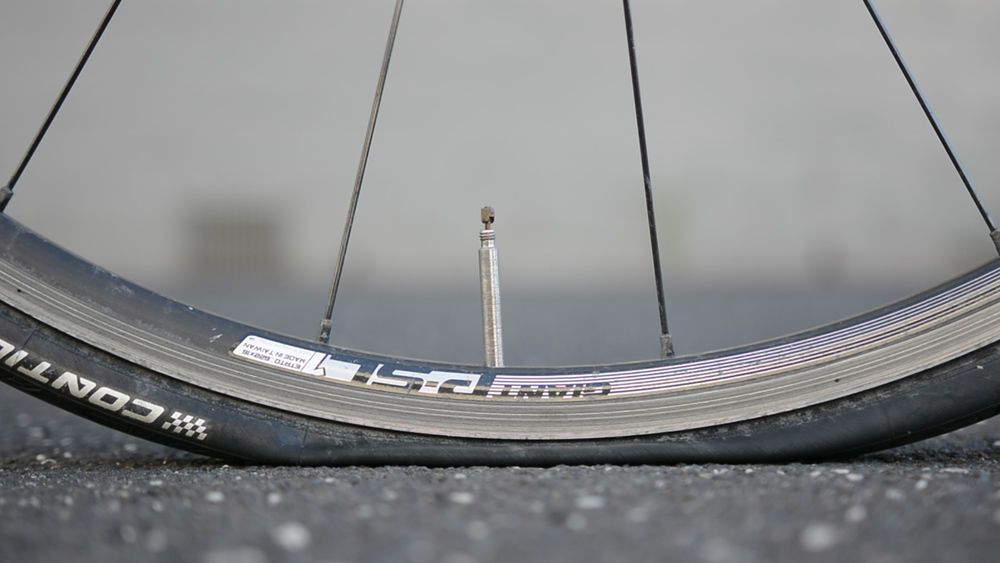 Such situations are fraught with damage to both the disk and the sidewall of the tire, in which case the disk will need to be corrected, and the tire repaired or even replaced. To avoid rim leaks, you need to inspect the rims every time you change tires. The loss of tightness occurs either due to corrosion or due to disc deformation, and not only steel, but also light alloy wheels can corrode. So if you see paint blistering or rust on the rim, the tires need to be put on rim sealant: when changing tires, this will be cheaper than the subsequent removal and re-tire to fix a leak on the rim.
Such situations are fraught with damage to both the disk and the sidewall of the tire, in which case the disk will need to be corrected, and the tire repaired or even replaced. To avoid rim leaks, you need to inspect the rims every time you change tires. The loss of tightness occurs either due to corrosion or due to disc deformation, and not only steel, but also light alloy wheels can corrode. So if you see paint blistering or rust on the rim, the tires need to be put on rim sealant: when changing tires, this will be cheaper than the subsequent removal and re-tire to fix a leak on the rim.
If you find a puncture, but there are no foreign objects in it, and you do not have a spare wheel and tire repair kits, there is another folk method of temporary "repair". You can screw a self-tapping screw into the found hole - if, of course, you have one. In extreme cases, you can look for a self-tapping screw in the cabin by unscrewing it from some interior detail. This method cannot be called reliable: it is unlikely to ensure complete tightness of the wheel, but at least it can help you get to the nearest tire shop.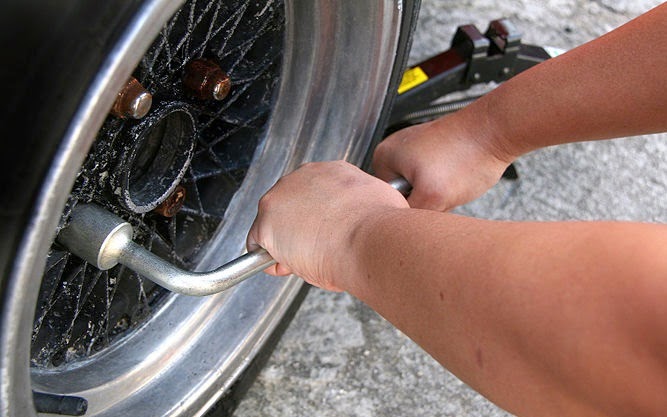
And a couple more useful remarks. If the wheel is completely flat, then it is easier to inflate it without a spool: the latter must be unscrewed, then the tire must be inflated and quickly screwed back in. The fact is that the spool itself, when inflated, resists the compressor, and in the event of a loose fit of a flat tire to the disk, the power of a simple magazine compressor may not be enough, and the absence of a spool helps to increase air flow and facilitate the operation of the compressor. If this does not help, you can jack up the car by hanging a flat tire: this will improve the fit of the tire to the disk, and the chances of inflating the tire will increase.
On-the-spot repair methods
Now let's look at options for repairing a tire yourself using special materials that you should take with you or, if a puncture caught you in the city, buy it at the nearest car shop.
1. The most common, cheapest and easiest way to do it yourself is to install a raw rubber band. The harnesses are sold complete with an abrasive awl to expand the hole in the tire and improve the contact of the repair harness with its edges, as well as a needle for installing the harness and an adhesive to fix it and at the same time seal the puncture. When choosing a repair kit in a store, you should pay attention to the following nuances:
The harnesses are sold complete with an abrasive awl to expand the hole in the tire and improve the contact of the repair harness with its edges, as well as a needle for installing the harness and an adhesive to fix it and at the same time seal the puncture. When choosing a repair kit in a store, you should pay attention to the following nuances:
Install the harness in the following order. First, the found hole is expanded with an abrasive awl - you need to insert and remove it several times into the puncture site. Then the tourniquet is inserted into the eye of the needle, and glue is applied to it. After that, the needle with the tourniquet must be inserted into the hole in the tire and pulled out sharply - so that the tourniquet remains in the hole, and the needle comes out without it.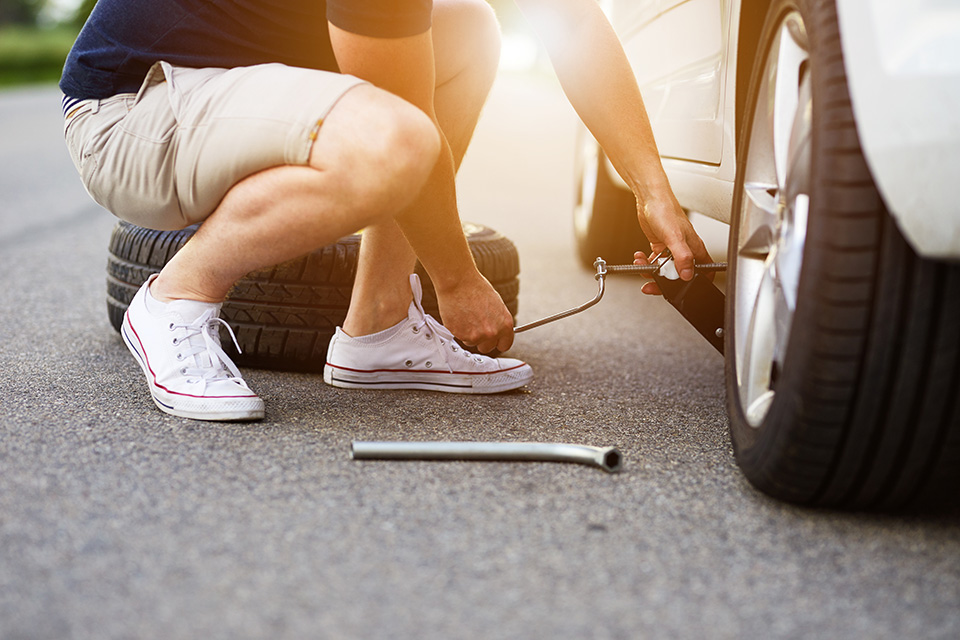 If everything worked out, it remains only to cut the end of the harness flush with the surface of the tire and pump up the wheel.
If everything worked out, it remains only to cut the end of the harness flush with the surface of the tire and pump up the wheel.
The advantages of repairing with a harness are quite decent reliability, simplicity and low cost. On a well-repaired tire, you can drive for a long time, and if the repair site starts to poison, you can either replace the harness or have the tire repaired in a quality service. Among the minuses is the possibility of damaging the cord during installation, as well as lower reliability compared to “full-fledged” repair methods in a tire shop. Strictly speaking, a tourniquet is still a temporary repair, so if it is possible to pump up a wheel and get to a tire fitting, then it is better not to enlarge the hole in the tire and get to the experts.
2. The second repair option is aerosol liquid sealants sold in cans. To repair a punctured tire with sealant, you need to remove the foreign object from the puncture site, then pour the sealant into the wheel through the valve, twist it to distribute the composition inside the tire, pump up the wheel and drive several kilometers at low speed for the final uniform distribution of the sealant.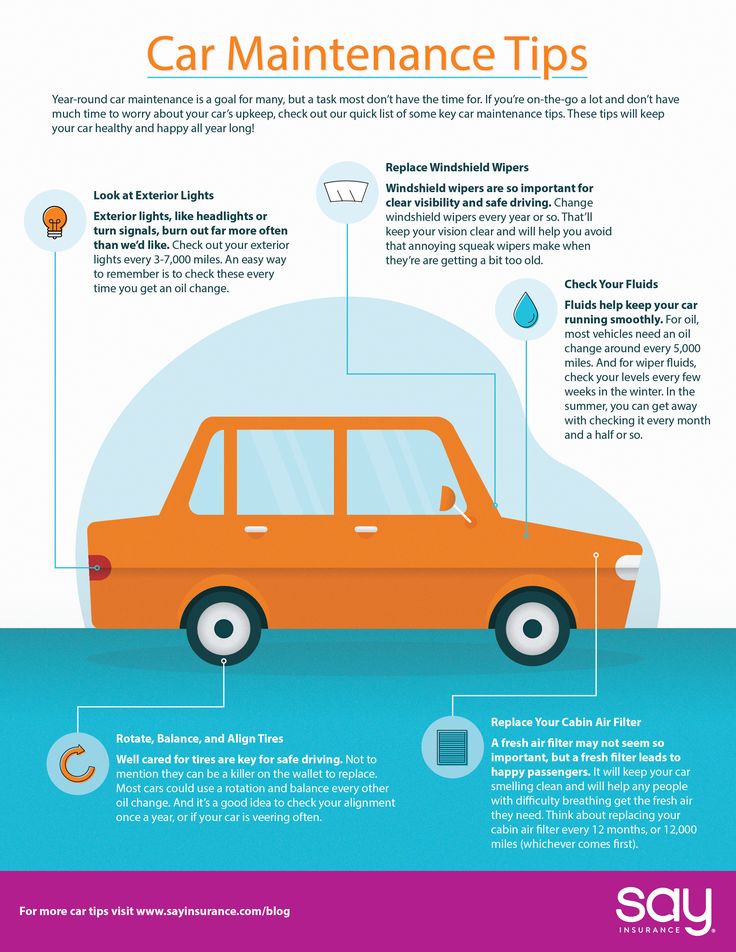
The advantage of this repair is that it is easier and less labor intensive than installing a harness. However, there are also disadvantages: the larger the hole, the higher the chance that the sealant will not be able to eliminate it, and such a repair can affect the wheel balance. Compared to a tourniquet, it can be considered even less reliable and preferable, but simpler.
Repair options at a tire shop
If you put on a spare tire and brought the wheel to a tire shop, you may also be offered several repair options. Consider the most popular with an indication of the advantages and disadvantages.
1. The first repair method is the same harness installation as described above. As we remember, the tourniquet refers to a temporary repair, so among tire specialists this method is considered bad form, but many workshops do not exclude it from the list of services. All the advantages and disadvantages are the same here: such a repair will be the fastest, simplest and cheapest, but less reliable than other methods. It is worth choosing it in cases where the price and / or speed of the procedure is more important to you than anything else. If quality is a priority, then it is better to fork out for the options listed below.
It is worth choosing it in cases where the price and / or speed of the procedure is more important to you than anything else. If quality is a priority, then it is better to fork out for the options listed below.
2. The second option for repairing a puncture is to install a patch on the inside of the tire, the so-called cold vulcanization. In this case, the tire is removed from the disk, the surface around the puncture is treated with an abrasive, and the damage is sealed with a special patch. This is a more preferred repair method than a tourniquet: it is more reliable and durable, especially in the case of side punctures, when not the thick tread part of the tire is damaged, but the thinner sidewall. Among the minuses, only a higher cost can be noted: in addition to the actual tire repair, you will have to pay for the removal and installation of the wheel (or do it yourself), tire fitting and balancing.
3. The third option is a "complex" of the first and second: installation of the so-called repair "fungus".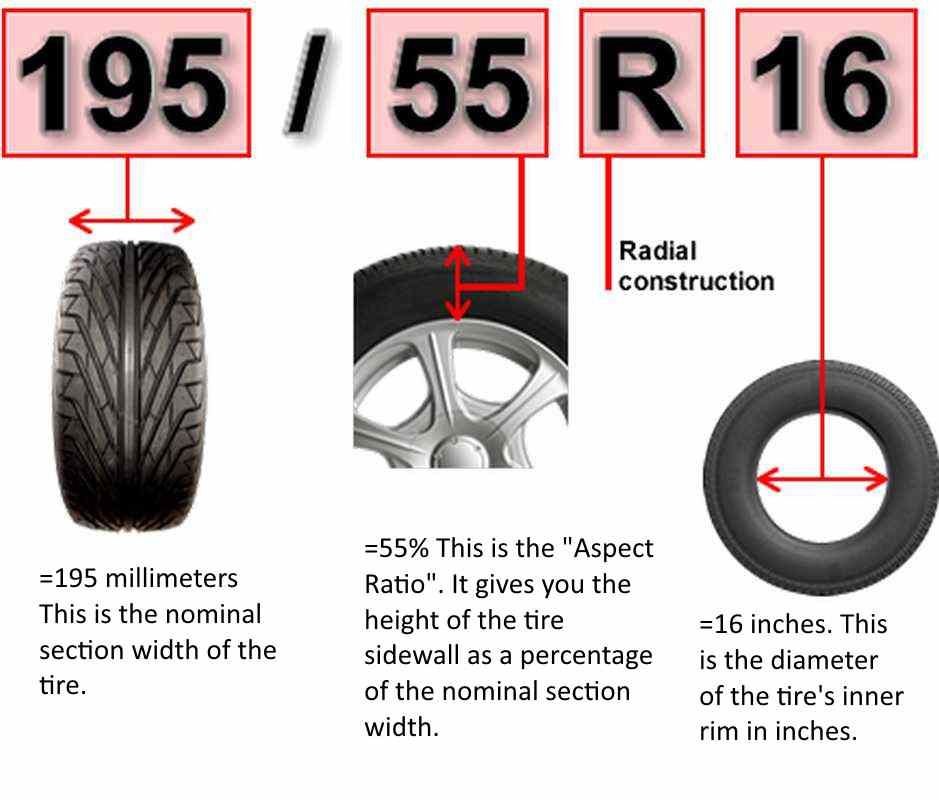 The “hat” of the fungus is a patch, and the “leg” is threaded from the inside of the tire to the outside. After gluing the patch, the excess part of the leg is cut off, as in the case of the tourniquet. Thus, not only the inner surface of the tire is closed, but also the hole itself. The advantages and disadvantages of this repair method are generally the same as those of a patch.
The “hat” of the fungus is a patch, and the “leg” is threaded from the inside of the tire to the outside. After gluing the patch, the excess part of the leg is cut off, as in the case of the tourniquet. Thus, not only the inner surface of the tire is closed, but also the hole itself. The advantages and disadvantages of this repair method are generally the same as those of a patch.
4. An extreme, “emergency” measure when repairing a punctured wheel is to install a camera in it. Typically, this method is used for tires that are no longer worth repairing, or “for reliability” after repairing a complex puncture. It should be understood that almost all modern tires are tubeless, that is, they are not designed to install a camera, so it’s not worth driving a wheel repaired in this way for a long time. Installing a tube is a temporary solution for riding until a new tire is purchased, and sometimes such wheels are left as spares. So this repair method can be kept in mind as a backup.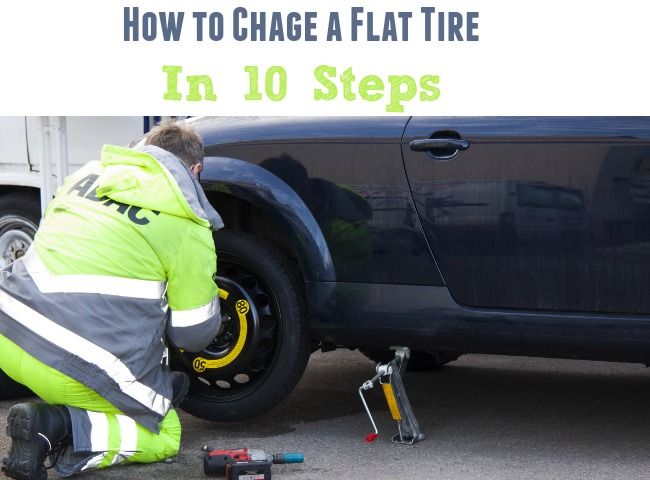
Finally
We have deliberately left out of the scope of this text such methods as combined repair of tires with a tourniquet and patch and hot vulcanization. The first is used quite rarely and for specific damage, and it is enough just to know about its existence. Well, the second is used to repair serious side cuts, and it is not only rare, but also very expensive. The cut site in this case is prepared, filled with raw rubber and processed with a hot press for vulcanization. Equipment for this procedure is not available in every tire shop, and the cost of repair can be about half the cost of a new tire.
interesting Popular questions
Test drives / Test drive Haval Dargo vs Mitsubishi Outlander: the dog is barking, the stranger is coming In the Haval dealership in the south of Moscow, life is in full swing: buyers look at cars, communicate with managers and sign some papers.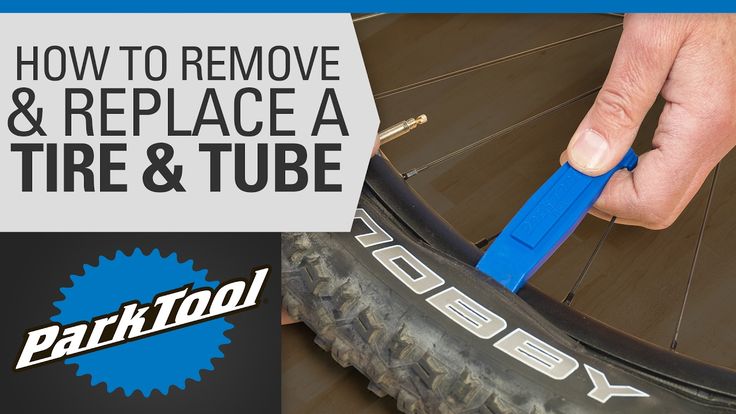 While I was waiting for the test Dargo, the same cross... 18233 7 205 13.09.2022
While I was waiting for the test Dargo, the same cross... 18233 7 205 13.09.2022
Test drives / Test drive Motor from Mercedes, emblem from Renault, assembly from Dacia: test drive of the European Logan 1.0 It would seem that what's new can be told about the second generation Renault Logan, known to every Russian taxi driver, as they say, up and down? However, this car has... 14617 ten 41 08/13/2022
Test drives / Test drive Geely Coolray vs Haval Jolion: Free Cheese? If! Do you want to buy a car today with a full warranty, on credit at an adequate rate, without wild dealer markups? Now this is still a task, because a full-fledged chain of "representation - s.